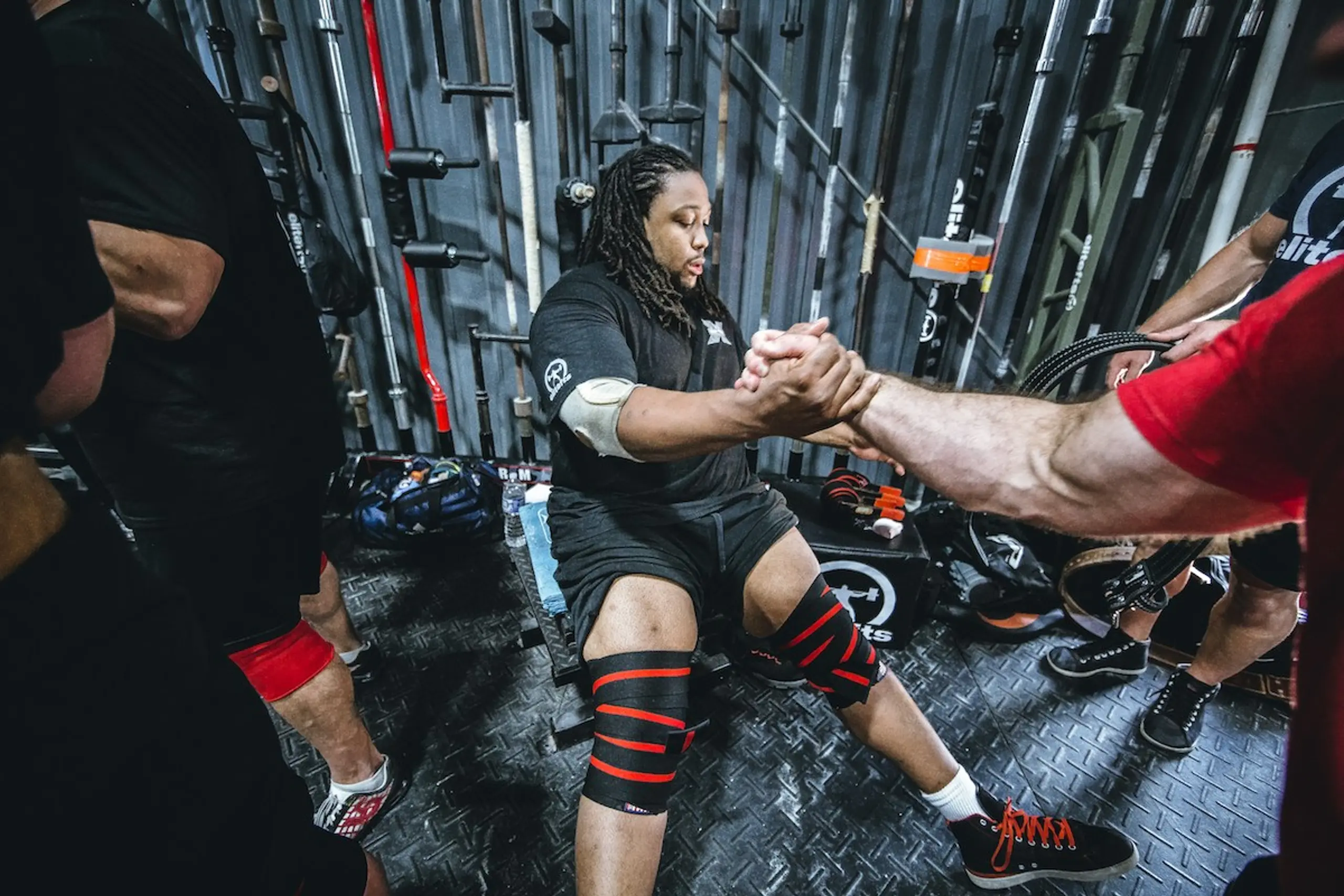
Jump to
Book a visit
$25 typical copay
$100 without insurance
Get back pain answers today with a virtual consultation.
A virtual back pain treatment consultation makes it easy to talk to a doctor about your pain, get a personalized treatment plan, and avoid the hassle of in-person visits.
Key takeaways:
- Knee and back pain are often linked, with one potentially causing or worsening the other.
- Understanding the underlying cause is crucial for proper treatment and lasting relief.
- Early intervention can prevent chronic issues and improve overall mobility and quality of life.
Knee and back pain are two of the most common physical complaints, and they’re often more connected than you might think. Whether you’re experiencing discomfort in one area or both, the root cause could be linked to the way your body moves and functions. Your back and knees support your body, so when one struggles, the other often compensates, leading to pain in both areas.
This article explores the relationship between knee and back pain, common symptoms to watch for, and the potential causes behind these issues. You’ll also learn practical steps for relief and when it’s time to seek medical attention.
Are knee and back pain related?
Yes, knee and back pain are frequently connected due to the biomechanics of your body. Your knees and lower back play critical roles in supporting your body’s weight and enabling movement. When one part is overworked or injured, it can lead to compensatory stress on the other, creating a cycle of pain.
For example, poor posture or a weak core can alter your gait, putting strain on your knees. Additionally, knee injuries, like ligament tears, may force you to shift weight to one side, stressing your lower back. Understanding this relationship can help you pinpoint the root cause of your discomfort and take steps toward meaningful relief.
Normal vs. abnormal back and knee pain
Not all pain in the knees or back is a sign of a serious problem. Temporary discomfort is often related to factors like muscle fatigue, lack of movement, or overexertion, and it typically improves with rest or simple remedies.
However, some types of pain warrant closer attention. Persistent or sharp discomfort that doesn’t improve over time may signal a deeper issue, like nerve involvement or structural damage. Similarly, swelling, redness, or sensations like numbness or tingling may indicate an underlying condition that requires medical evaluation.
By recognizing the difference between temporary discomfort and concerning symptoms, you can better decide when to address these issues at home and when to seek professional help.
Symptoms associated with knee pain and back pain
Knee and back pain can present with a variety of symptoms, depending on the underlying cause. Recognizing these signs can help you determine the best course of action.
Stiffness and limited mobility
Feeling stiff in your knees or lower back, especially after periods of inactivity, could indicate joint inflammation or muscle tension. This is common in conditions like osteoarthritis or after prolonged sitting.
Radiating pain
Pain that travels from your lower back to your knees—or vice versa—may be a sign of nerve compression, such as sciatica. This type of pain often feels sharp or burning and may worsen with certain movements.
Swelling or tenderness
Knee or lower back swelling could point to injury, inflammation, or fluid buildup. For example, a swollen knee might indicate bursitis, while tenderness in the lower back could suggest a strained muscle.
Weakness or instability
If your knee feels like it might give out or your legs feel weak, it may signal a structural issue, such as ligament damage or a herniated disc affecting nerve function.
Causes of knee and back pain together
Knee and back pain can stem from a variety of interconnected causes. Here are some of the most common:
Poor posture
Slouching or sitting improperly for extended periods can lead to muscle imbalances and strain in the lower back, which can affect your knees over time. When your posture is off, the extra stress on your knees may lead to discomfort during walking or standing.
Muscle imbalances
Tight or weak muscles, such as tight hamstrings or weak quadriceps, can disrupt your body’s alignment. These imbalances might cause your knees or lower back to overcompensate, leading to pain.
Arthritis
Conditions like osteoarthritis can affect both the knees and the lower back, causing joint stiffness, swelling, and pain. For example, arthritis in the spine may lead to inflammation that radiates to the knees.
Sciatica
Sciatica occurs when the sciatic nerve is compressed, often due to a herniated disc. This can cause radiating pain from the lower back to the knees, often accompanied by tingling or numbness.
Considerations based on the back and knee pain’s location
The location of your pain can provide valuable clues about its underlying cause:
Lower back pain and knee pain
Pain in both the lower back and knees often results from posture issues, arthritis, or muscular imbalances. For instance, weak core muscles can strain the lower back and change how you walk, stressing your knees.
Lower back pain and knee pain on one side
Pain on one side of the body may point to nerve compression or an injury affecting one joint more than the other. For example, a herniated disc on the right side of the spine might cause pain radiating down the right leg and into the knee.
Back pain and knee joint pain
If you’re experiencing pain directly in the knee joint along with back discomfort, conditions like osteoarthritis or rheumatoid arthritis could be at play. These inflammatory conditions often affect multiple joints at once.
How to get relief from knee and back pain at home
If your pain isn’t severe or persistent, simple at-home remedies can help ease discomfort:
Apply heat or ice
Heat can relax tense muscles and improve blood flow, while ice reduces inflammation. Apply for 15–20 minutes at a time to the affected area.
Stretch and strengthen
Regular stretching, such as gentle yoga poses, can help relieve tension in the knees and lower back. Strengthening your core and leg muscles can also provide better support for these areas.
Rest and modify activity
Avoid activities that worsen your pain, such as heavy lifting or high-impact sports. Resting for a day or two while still engaging in light activity (like walking) can promote healing without stiffness.
When to see a doctor about knee and back pain
While mild pain can often be managed at home, certain symptoms require professional evaluation:
You should see a doctor if:
- Pain lasts more than a week and doesn’t improve with rest or over-the-counter remedies.
- You notice swelling, redness, or warmth around the knee or back.
- Your pain worsens with movement or interferes with daily activities.
- Numbness, tingling, or weakness occurs in your legs or feet.
You should go to the emergency room if:
- You experience sudden, severe pain that worsens rapidly.
- There’s an inability to bear weight on the knee or back due to instability.
- Pain is accompanied by fever, significant swelling, or a visible deformity.
- You lose control of your bowel or bladder, which could signal a spinal emergency.
Questions to ask your doctor about knee and back pain
When visiting a healthcare provider, it’s important to gather information understand your symptoms and treatment options:
- What could be causing my knee and back pain?
- Are there specific tests or imaging needed to diagnose the issue?
- What treatment options would you recommend for my condition?
- Are there exercises or lifestyle changes that can help prevent future pain?
Frequently asked questions: knee and back pain
Knee and back pain often raise questions about their cause and management. Below are answers to common concerns:
What if you experience knee and back pain after running?
Running can strain your joints and muscles, especially if your form is off or your shoes lack support. Tight hamstrings or weak glutes might force your lower back to compensate, leading to pain. Rest, stretch, and consider wearing properly fitted running shoes.
What if you experience knee and back pain during your period?
Hormonal changes during menstruation can cause fluid retention and inflammation, leading to discomfort in both the back and knees. Using heat therapy or over-the-counter anti-inflammatory medication can help ease these symptoms.
What if you experience lower back pain and knee pain at night only?
Pain that’s worse at night could point to conditions like arthritis or sciatica, as inflammation tends to increase when you’re resting. Adjusting your sleep position—such as placing a pillow under your knees when lying on your back—can help reduce strain.
Final thoughts
Knee and back pain can disrupt your daily life, but understanding the connection between these areas can help you find relief. Practicing good posture, staying active, and addressing pain early are key steps in managing discomfort and preventing chronic issues.
If your symptoms persist or interfere with your routine, don’t hesitate to seek medical care. With the right diagnosis and treatment plan, you can reduce pain, restore mobility, and maintain a healthy, active lifestyle.
General Medicine follows a strict editorial process, including using real experts to write our articles, vetted primary sources, fact-checking, a secondary medical review, and updates as necessary. This article was medically reviewed and fact checked by Dr. Pallabi Sanyal-Dey, MD.
Sources
Gupton M, Imonugo O, Black AC, et al. Anatomy, Bony Pelvis and Lower Limb, Knee. [Updated 2023 Nov 5]. In: StatPearls [Internet]. Treasure Island (FL): StatPearls Publishing; 2024 Jan-. Available from: https://www.ncbi.nlm.nih.gov/books/NBK500017/
Nowotny AH, Calderon MG, Alves BMO, de Oliveira MR, Andraus RAC, Aguiar AF, Amorim CF, Leonard G, da Silva RA. Low-Back Pain and Knee Position-Related Differences on Postural Control Measures During a One-Legged Stance in Athletes. J Sport Rehabil. 2020 Nov 25;30(4):631-637. doi: 10.1123/jsr.2020-0095. PMID: 33238243.https://journals.humankinetics.com/view/journals/jsr/30/4/article-p631.xml
Casiano VE, Sarwan G, Dydyk AM, et al. Back Pain. [Updated 2023 Dec 11]. In: StatPearls [Internet]. Treasure Island (FL): StatPearls Publishing; 2024 Jan-. Available from: https://www.ncbi.nlm.nih.gov/sites/books/NBK538173/#
Davis D, Maini K, Taqi M, et al. Sciatica. [Updated 2024 Jan 4]. In: StatPearls [Internet]. Treasure Island (FL): StatPearls Publishing; 2024 Jan-. Available from: https://www.ncbi.nlm.nih.gov/books/NBK507908/
Hsu H, Siwiec RM. Knee Osteoarthritis. [Updated 2023 Jun 26]. In: StatPearls [Internet]. Treasure Island (FL): StatPearls Publishing; 2024 Jan-. Available from: https://www.ncbi.nlm.nih.gov/books/NBK507884/
Dydyk AM, Ngnitewe Massa R, Mesfin FB. Disc Herniation. [Updated 2023 Jan 16]. In: StatPearls [Internet]. Treasure Island (FL): StatPearls Publishing; 2024 Jan-. Available from: https://www.ncbi.nlm.nih.gov/books/NBK441822/
Lee JW, Park HS. Relation of the factor to menstrual pain and musculoskeletal pain. J Exerc Rehabil. 2015 Apr 30;11(2):108-11. doi: 10.12965/jer.150188. PMID: 25960984; PMCID: PMC4415749. https://pmc.ncbi.nlm.nih.gov/articles/PMC4415749/pdf/jer-11-2-108.pdf
Spector LR, Madigan L, Rhyne A, Darden B 2nd, Kim D. Cauda equina syndrome. J Am Acad Orthop Surg. 2008 Aug;16(8):471-9. doi: 10.5435/00124635-200808000-00006. PMID: 18664636. https://journals.lww.com/jaaos/abstract/2008/08000/cauda_equina_syndrome.6.aspx
Chauhan K, Jandu JS, Brent LH, et al. Rheumatoid Arthritis. [Updated 2023 May 25]. In: StatPearls [Internet]. Treasure Island (FL): StatPearls Publishing; 2024 Jan-. Available from: https://www.ncbi.nlm.nih.gov/books/NBK441999/
Our editorial standards
At General Medicine, we cut through the clutter to make health care clearer, faster, and easier to navigate. Every article is grounded in evidence-based research and peer-reviewed journals, reviewed by medical professionals, and written in accessible language that helps you make health decisions with confidence. We’re committed to ensuring the quality and trustworthiness of our content and editorial process by providing information that is up-to-date, accurate, and actually useful. For more details on our editorial process, see here.



